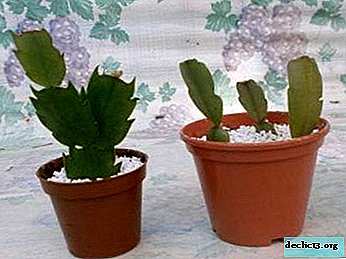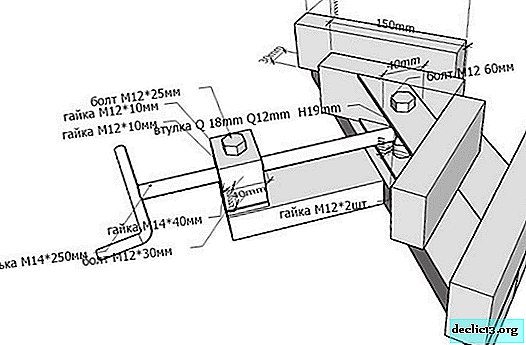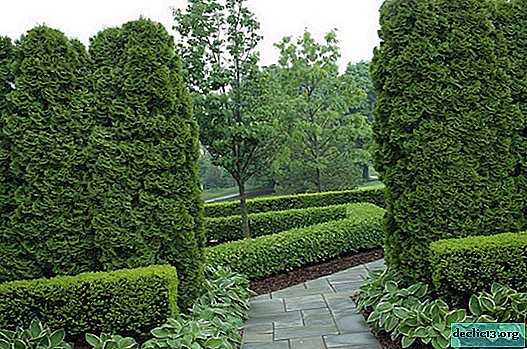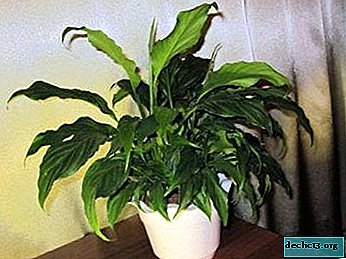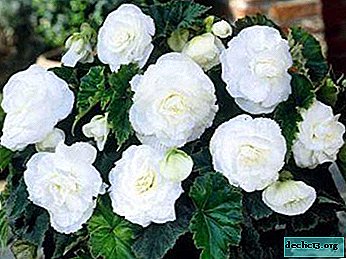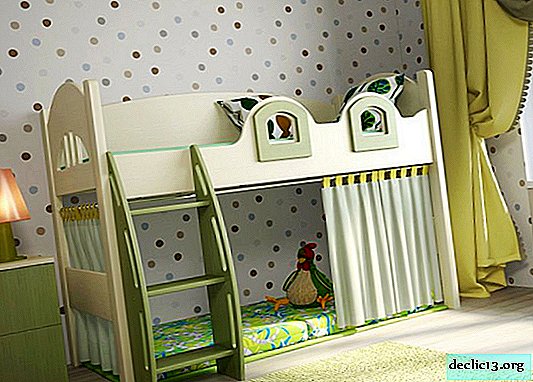Is it possible to cut fuchsia for the winter and how to carry out the procedure so that there is lush flowering?
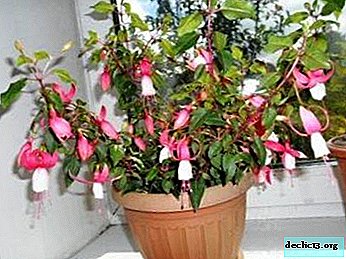
Fuchsia is a beautiful and lush-flowering houseplant. It features bright and original flowering. But for this he will have to be fully looked after.
One of the main ways to create lush flowering is pruning. This is a fairly responsible process, which involves observing certain rules.
From the article you will learn how to cut fuchsia for the winter, when is it better to do it and how, as well as how to deal with various diseases and pests.
Cut Features
Season selection: when is the best time to start?
First you need to decide when it is best to trim fuchsia. Most often, this process is performed in the spring. Trimming is worth before new buds are formed.. Thus, flowering will become lush and long.
Can this be done in autumn and winter?
It is possible to carry out autumn trimming of fuchsia, but only do it in late October - early November. This option is suitable for those gardeners who grow fuchsia as a houseplant (read about the nuances of growing fuchsia at home here).
Pruning in the fall is gentle. On each branch, remove those parts on which there were peduncles. Cut branches to the first on top of a pair of leaves with stone buds. When fuchsia still continues to bloom in the fall, it is better not to touch it, but to postpone this matter until winter.
 Carry out winter pruning for those plants in which flowering lasts until late autumn. Besides, winter pruning is mandatory before sending the flower for the winter (how to keep fuchsia in the winter in the basement and in the apartment, read here).
Carry out winter pruning for those plants in which flowering lasts until late autumn. Besides, winter pruning is mandatory before sending the flower for the winter (how to keep fuchsia in the winter in the basement and in the apartment, read here).
Trimming should be strong, leave shoots 15 cm long. If the crowns are already formed, then remove only weak shoots, thin out and shorten the remaining branches to 1/3 of their height. Subsequently, to form a standard tree in specific places, pinch the shoots.
Instrument and disinfection
Use a sharp knife or clippers to trim fuchsia. Before starting the process, one of the important points remains the disinfection of garden equipment. This will prevent the development of viral diseases, the transmission of which occurs with the juice of affected plants.
In the process of disinfection, various compounds are used that contain alcohol. You can use alcohol-containing wipes, medical sprays or household products: chlorine, kerosene.
Advice! Manganese sulfate (5-10%) has a disinfecting effect. Dip the tool in such a solution for several minutes, and then wipe it with a clean rag.For lush flowering
It is from pruning that the flowering intensity depends. The later the procedure, the later the fuchsia begins to bloom. It is advisable to carry out pruning 2 times a year - before wintering and early spring. Autumn pruning is preventive in nature, since damaged, frail and thin branches are removed in its process.
Spring pruning is performed in February-March. Its main task is to form a beautiful crown with a large number of young shoots, at the ends of which buds are formed.
The trimming process has the following features:
- The first step is to remove the small, frail little branches. On them, most likely, flowering will be absent, and if it does, it will be very weak.
- Now you can proceed to the removal of dry and very thin branches.
- Cut off those shoots that are directed to the center. This will prevent severe bush thickening.
- When cutting the shoots, take into account that the crown is of the correct shape. Make a cut at a distance of 1.5-2 cm from the site.
How to care after the procedure?
Lighting
A flower loves diffuse lighting, so after pruning, set a pot of plants on windows facing north or east. If there is not enough light, rare and small flowers will form on thin and weak shoots.
Watering
Humidification should be moderate. It is necessary to ensure that the topsoil does not dry out. For watering use only soft and settled water. In winter, watering is reduced to 2 times a month, and in spring - 1-2 times a week.
Fertilizers
 It is necessary to start applying fertilizing immediately after wintering and pruning in the spring and continue until autumn. In the store you can buy special fertilizersdesigned for flowering plants. But applying them wisely.
It is necessary to start applying fertilizing immediately after wintering and pruning in the spring and continue until autumn. In the store you can buy special fertilizersdesigned for flowering plants. But applying them wisely.
If the flower is overfed, it will grow lush foliage, and flowering will be sparse. To prevent this, apply fertilizer no more than 1 time in 2 weeks. When choosing drugs, it is necessary that they include such components: potassium, phosphorus, magnesium, nitrogen (in a low concentration).
In addition, there are the following rules that are recommended for feeding fuchsia after trimming:
- Only apply nutrient to moist soil.
- Dilute organic fertilizers with water 2 times more than indicated in the instructions. Otherwise, there will be no flowering, but the foliage will begin to grow rapidly.
- In winter, do not feed the flower.
You can find out what proper care for fuchsia should be at home here.
Growing, propagating and transplanting a flower
A flower transplant should be performed annually. This will update it so that the overgrown root system has a lot of space. For transplantation use a ceramic pot of medium size and light color. The reason is that during the heat in the plastic tank, the soil quickly warms up, and the heating of the roots helps to drop the buds.
As for the soil, fuchsia does not have any special requirements, but it is best to use the soil composition obtained from such components: deciduous land, peat and sand (3: 2: 1).
Important! Be sure to take care of the drainage. To do this, put expanded clay on the bottom of the pot.The plant should not be transplanted, but it is better to transship along with a lump of earth, and fill up with soil at the edges. This will prevent damage to the root system and accelerate flower growth. Before transplanting fuchsia, 1/3 cut off part of the length of all shoots.
As for the propagation of fuchsia, it can pass by seeds, cuttings and leaves.
In detail about the cultivation of fuchsia and the care of it, we talked about in this article.
Seeds
This method is not so popular. The reason is that in order to obtain seeds, the plant will have to be pollinated artificially, then harvested. In addition, the seed method will not allow you to get a flower with the exact varietal characteristics.
Cuttings
 This method is the simplest and most demanded. Procedure:
This method is the simplest and most demanded. Procedure:
- Cut the cuttings in spring and autumn. Their length should be approximately 7 cm.
- Place the cuttings in a humid environment. This may include a glass of water or raw sand.
- After 3 weeks, roots are formed. This is the best time for a plant to transplant into the ground.
- For cuttings, use small pots or disposable cups.
Next, you can watch a video where you will see the propagation of fuchsia by cuttings:
Leaf
This method is also simple and quick. It is necessary to tear off the strongest leaf, set it in a loose and moist substrate 1 cm, cover it with a jar on top. As soon as small processes are formed, the plant is transplanted into a larger pot.
Disease
The plant is very rarely sick. Diseases can occur as a result of improper care, after trimming. The most common are:
- Rust. You can recognize the ailment by the presence of brown spots on the inner surface of the leaf. The disease is fungal and can be brought in as a result of pruning if the instruments used for the affected flower are not sanitized. urgently need to remove the affected leaves, treat with Bordeaux fluid at intervals of 2-3 days.
- Root rot. This disease is formed as a result of improper hydration. In a healthy plant, the roots are white and elastic. If during the transplant it turned out that the roots are dark brown in color, then this is root rot.Attention! The flower cannot be cured, so you have to get rid of it. Although you can have time to cut the cuttings and root them.
- Chlorosis. This disease develops as a result of improper irrigation, not with water, but with tap water. The leaves begin to turn yellow. To return it to a healthy look, it is necessary to review the irrigation regimen.
Pruning fuchsia is a necessary agricultural technique, without which the plant will not bloom actively and magnificently. This process is simple, so even a beginner grower can do it. But if this is not done, then the plant will take an ugly shape, the number of buds will decrease, as will their size.



